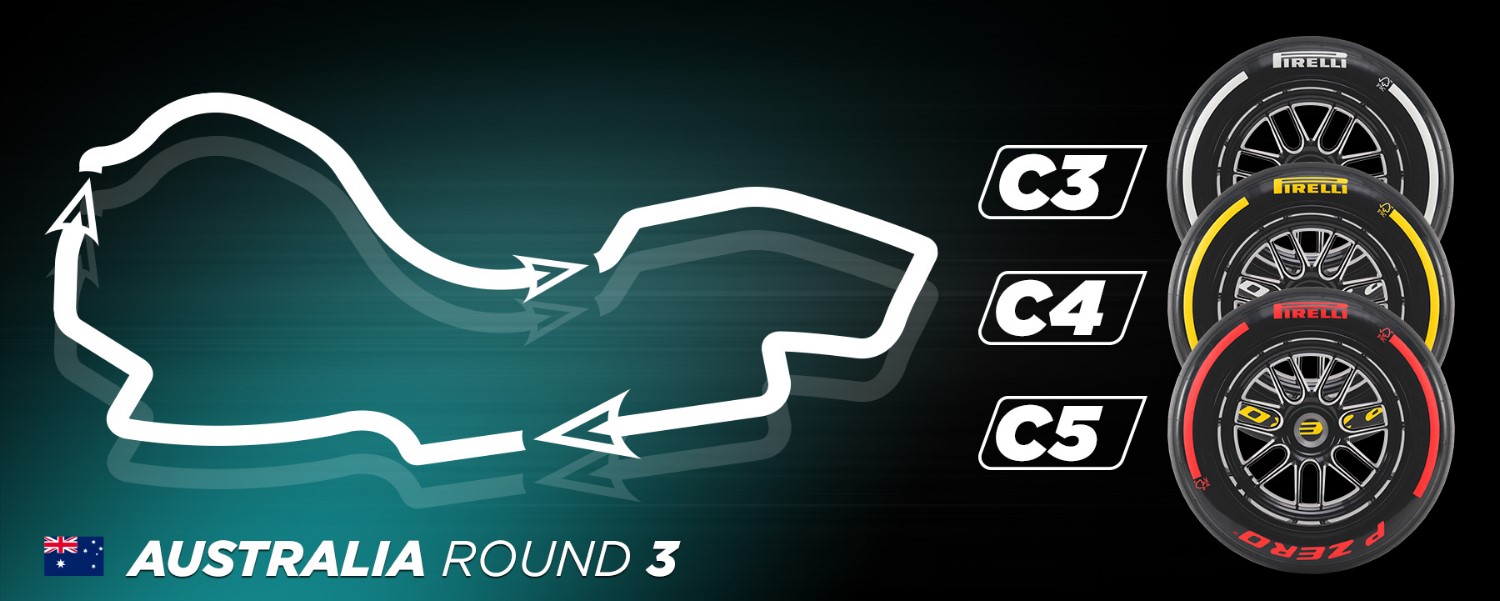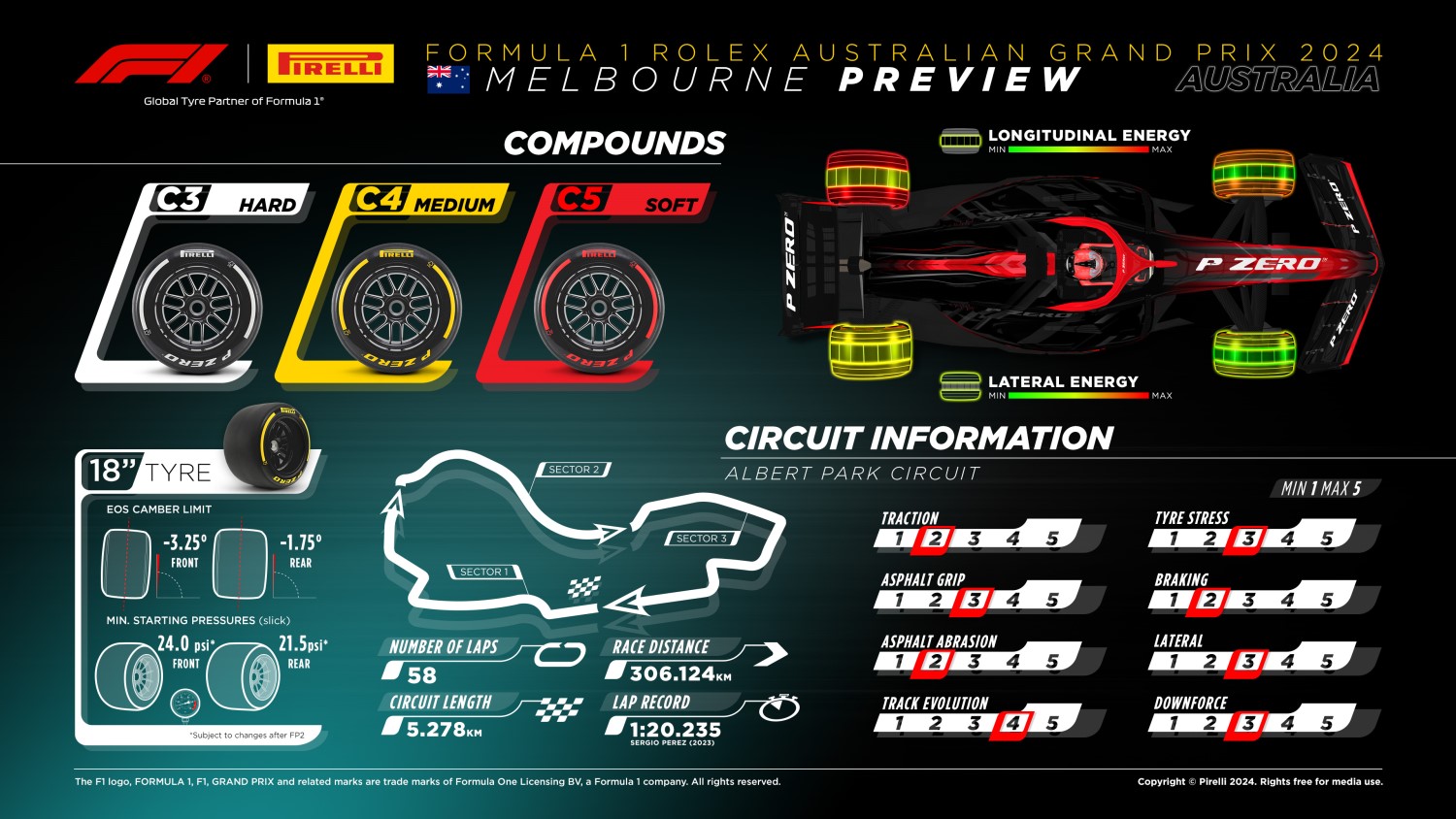Formula 1 News: 2024 Australian GP Preview (Update)
Formula One champion Max Verstappen will bid to win back-to-back Australian Grands Prix on Sunday and match his record of 10 consecutive F1 race victories.
Another checkered flag at Albert Park would see the Dutchman equal last year’s run of 10 wins from Miami to the Italian Grand Prix as he works to increase his run of 19 wins in the last 20 F1 races.
“We are looking forward to racing in Melbourne this week,” said Verstappen.
“It is a very fast track layout now, which requires a good mix of getting straight line speed as well as decent grip in the corners, so it’s all about finding that middle ground.
“The recent resurfacing has made the track a lot smoother and fun to drive too, so we are looking forward to that. We also have softer compounds compared to last year, which will make it a bit more tricky for strategy, but hopefully means it is better for racing with more pit stops.
“Getting used to the jet lag is always a challenge down under, but it is always great to be in Melbourne regardless and amazing to see all the passionate racing fans coming to support!
March 19, 2024
The 2023 edition of the Australian GP F1 race set a new attendance record at the circuit for the weekend with 444,631 attending it, surpassing the 2022 figure by 25,517. An even larger crowd is expected this year.
–by Mark Cipolloni–
Thanks to a massive surge in corporate hospitality and sold-out tickets, the Australian Formula 1 Grand Prix is expected to deliver revenue above $100 million for the first time, reflecting a global increase in motorsport interest.
Five years ago, it was starting to look like Australia had just about enough motorsports, with attendance numbers down in the 200,000s. Now, just a few days out from the 2024 event, it seems to be facing the opposite problem: too much interest to meet the demand. The Australian Grand Prix also has the highest female interest of all Formula One races globally, with 40 percent of racegoers identifying as female.
“We had 440,000 people at the event last year (over four days), and that’s 50 percent higher than we had in 2019. So the growth has been enormous,” said Australian Grand Prix corporate chief executive Travis Auld.
The Albert Park weekend is a firm favorite in the world of Formula 1, thanks to its stunning location and the buzzy atmosphere of host city Melbourne. The track itself isn’t too hard on tires, with degradation being a bigger factor than wear. It’s now the beginning of autumn at this time of year in Australia, and this can spring a few weather-related surprises, with temperature swings and rain all having made their mark on the race weekend in the past.
There’s a packed program of support races from Thursday onwards: as well as Formula 2 and Formula 3, there’s also the Porsche Carrera Cup and Australian Supercars championship, which means there will be plenty of rubber laid onto the track to influence grip levels.
Australia first joined the Formula 1 calendar in 1985, with the 37th edition taking place this weekend. Up to 1995, the Adelaide street circuit hosted the race before moving to Melbourne, which has been the Australian Grand Prix’s home ever since (with the exception of 2020 and 2021, when the race didn’t run due to the Covid-19 pandemic).
The most successful driver at the Australian Grand Prix is Michael Schumacher on four wins: all of which took place in Melbourne with Ferrari. The Maranello team’s 10 wins in Australia is beaten only by McLaren, on 11 victories. McLaren also has the most poles in Australia (10) while the driver with the most pole positions – eight – is Lewis Hamilton. In terms of podium finishes, Ferrari and McLaren hold the joint record with 26, while Hamilton is the driver who has been in the top three most times: 10. Red Bull has only won in Melbourne twice: in 2011 with Sebastian Vettel and last year with Max Verstappen
2023 was the most attended sporting event ever in Melbourne. The Grand Prix was the first-ever race to feature three red flags in the Formula One history.
It’s always great to go racing in Australia. Albert Park is a good circuit, one synonymous with Formula 1 and it presents many challenges. It’s not a conventional circuit as it’s only used part time throughout the year. Many of the corners are medium speed and it is quite technical throughout. And there’s the secondary challenge of contending with jet lag from Europe, somehow compensated by the fervor of the Australian fans.
Going on a plane for nearly a full day (if not more) is totally worth it when one of the greatest, most laid-back, and friendliest cities in the world awaits you at the end of the flight. Melbourne is brilliant. A vibrant art scene, glorious coffee, and chill lifestyle all conspire to make this weekend a popular one.
Formula 1 has a good mixture of old-school and new modern tracks. Street circuits versus hybrid ones so honestly, we think they’re in a good place.
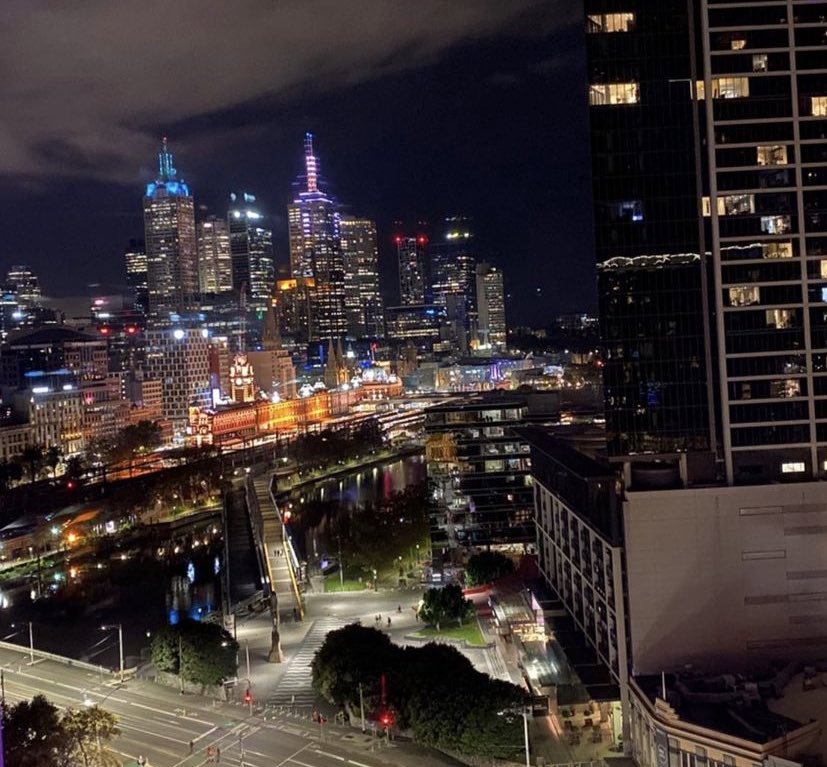
In 2022, for the first time in 26 years, significant alterations were made to the parkland circuit in order to promote better racing and facilitate more overtaking. This includes the widening of several turns, reprofiling of certain corners, with the biggest change being the removal of the old turn 9/10 chicane.
And this year the 4th DRS zone will again be used after being eliminated in 2022, which will obviously increase speed and therefore lap time and make it the quickest Grand Prix and the highest average speed ever in Melbourne.


Weather Forecast
Friday, March 22: FP1 & FP2
Friday’s opening practice sessions (FP1 and FP2) look set for ideal conditions. Clear skies and a light breeze, with temperatures ranging from 66-71 degrees, will provide a perfect platform for teams to gather crucial data and fine-tune their car setups. However, things could get a little more interesting on Saturday.
Saturday, March 23: FP3 & Qualifying
Sunny intervals with a similar light breeze are still on the cards for FP3 and qualifying, but a small chance of rain emerges later in the afternoon, potentially spicing up the crucial qualifying session.
With a 14% chance of precipitation, teams will need to be adaptable and ready to switch to wet-weather setups if necessary. This could throw a strategic curveball, adding a touch of unpredictability to the grid order.
Sunday, March 24: Race Day
The biggest question mark lies with the race itself on Sunday. The forecast predicts a partly cloudy day with light rain, a 70-degree temperature, 50% humidity, and a 10% chance of precipitation. Also, expect a gentle breeze from the south south west when the cars are out on the track.
However, keep an eye on the latest forecasts, as the weather can change in the lead-up to race day.
USA TV Times (Eastern)
All Times Eastern
| Thursday, March 21, 2024 | Location | TV Times | Network |
| Formula 1 Australian GP Practice 1 | Melbourne | 9:25pm – 10:30pm (Live) | ESPNews/ESPN+ |
| Formula 3 Australia Practice | Melbourne | 5:50pm – 6:30pm (Live) | ESPN+ |
| Formula 3 Australia Qualifying | Melbourne | 11:00pm – 11:30pm (Live) | ESPN+ |
| Formula 2 Australia Practice | Melbourne | 7:00pm – 7:30pm (Live) | ESPN+ |
| Friday, March 23, 2024 | Location | TV Times | Network |
| Formula 1 Australian GP Practice 2 | Melbourne | 12:55am – 2:00am (Live) | ESPN2 |
| Formula 2 Australia Qualifying | Melbourne | 2:30am – 3:00am (Live) | ESPN+ |
| F1 Show: Australia | Melbourne | 3:10am – 4:00am (Live) | ESPN3 |
| Formula 3 Australia Sprint Race | Melbourne | 8:15pm – 9:00pm (Live) | ESPN+ |
| Formula 1 Australian GP Practice 3 | Melbourne | 9:25pm – 10:30pm(Live) | ESPNews/ESPN+ |
| Formula 2 Australia Sprint Race | Melbourne | 11:15pm – 12:00am (Live) | ESPN+ |
| Saturday, March 23, 2024 | Location | TV Times | Network |
| F1: Qualifying Pre-Show | Melbourne | 12:30am – 12:55am (Live) | ESPN3 |
| Formula 1 Australian GP Qualifying | Melbourne | 12:55am – 2:00am (Live) | ESPN2 |
| F1: Ted’s Qualifying Notebook | Melbourne | 3:00am – 3:30am (Live) | ESPN3 |
| Formula 3 Australia Feature Race | Melbourne | 6:05pm – 7:00pm (Live) | ESPN+ |
| Formula 2 Australia Feature Race | Melbourne | 8:35pm – 9:30pm (Live) | ESPN+ |
| Formula 1 Australian GP – Pre-Race | Melbourne | 10:30pm-11:55pm (Live) | ESPNews |
| Formula 1 Australian GP – Race | Melbourne | 11:55pm-2:00am (Live) | ESPN2 |
| Sunday, March 24, 2024 | Location | TV Times | Network |
| F1: Checkered Flag | Melbourne | 2:00am – 3:00am (Live) | ESPN3 |
| F1: Ted’s Race Notebook | Melbourne | 3:00am – 3:30am (Live) | ESPN3 |
| Formula 1 Australian GP | Melbourne | 6:30am – 8:30am (Replay) | ESPN2 |
| Formula 1 Australian GP | Melbourne | 3:00pm – 5:30pm (Replay) | ESPNews |
| Formula 1 Australian GP | Melbourne | 11:00pm – 1:00am (Replay) | ESPN2 |
Verstappen Out Duels Hamilton in 2023
Defending World Driving Champion Max Verstappen out dueled Lewis Hamilton to win a crazy crashed marred Australian GP.
Verstappen had to survive three Red Flag restarts to win his 37th Formula 1 race and his first in Australia. Verstappen put in a dominant display once more for his second win from the first three races.
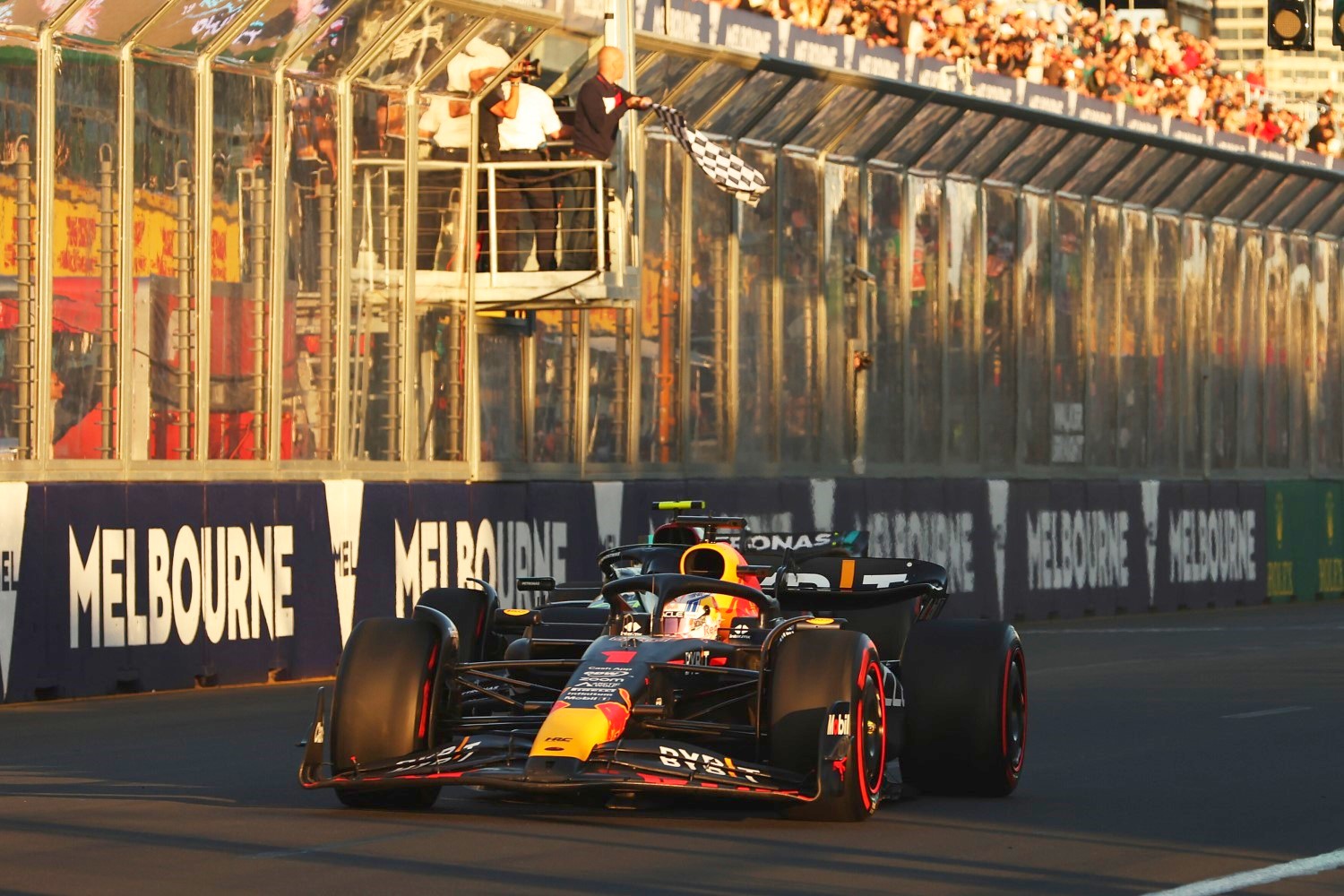
With 131,124 sun-drenched fans in attendance, polesitter Verstappen lost the lead of the Australian GP at the start of the race to both Mercedes drivers, George Russell and Lewis Hamilton.
After the first Red Flag period, Verstappen had arch-rival Hamilton in front of him on the lap 10 restart, but it took the Dutchman just two laps to school Hamilton around the outside of turn 9 and drive off into the distance.
With small gaps between the leading cars and with just a handful of laps remaining it seemed like the order might settle. That notion evaporated on lap 54 when Haas’ Kevin Magnussen hit the barriers in Turn 2. After losing his right rear tire, the Dane pulled over at the side of the track, but with the tire on the circuit at the exit Turn 2, the Safety Car was released once again. However, with wheel rim debris spread across the track, the red flags were shown.
With so much at stake, the restart was always going to be dramatic, but when the lights went out it quickly turned to chaos. Verstappen made a good start to hold the lead ahead of Hamilton, but behind the top two Alonso was clipped by Sainz and the spinning Aston Martin sent Gasly wide. When the Alpine driver rejoined it was into the path of team-mate Ocon and the teammates collided. With chaos reigning the red flags were shown again.
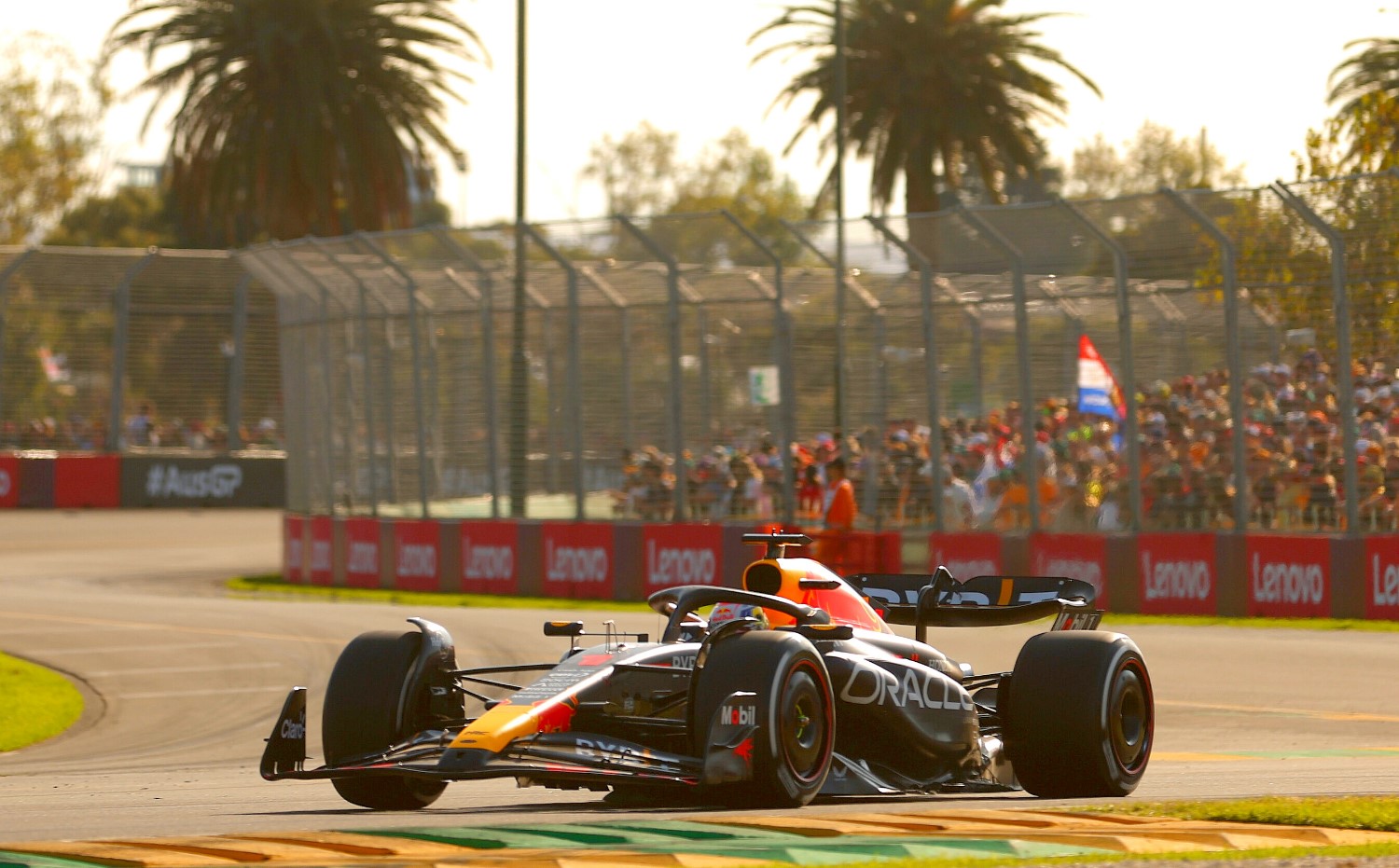
Race Insight
- Circuit changes: Major layout changes in 2022, including the widening of five corners and a new flat-out section in place of the former Turns Nine and 10 chicane mean that drivers and teams should already be to grips with a new-look Albert Park. Finding the limit and evaluating car and strategy implications during practice with this year’s cars will be a crucial task.
- Overtaking: With four DRS zones – more than any other 2024 circuit – and seemingly closer racing because of Formula One’s new regulations, and porpoising gone from this year’s cars, passing is expected to improve. The changes to the track layout at Albert Park for 2022 – combined with the new technical regulations – saw the number of on-track passes rise nearly three-fold compared to the last race on the old track layout in 2019.
- Strategy: Due to low tire degradation, the Australian Grand Prix has historically been a one-stop race but projected higher speeds, improved overtaking, potential increased tire wear and a reduced pit-lane time loss due to higher speed limits could make a two-stop strategy more viable.
- Safety Cars: The close walls of most street circuits, grass and gravel are both ready to catch drivers out in an instant. Last year’s race featured three red-flags so be prepared for possible race stoppages
- Racing again in Melbourne is a fantastic indication of a progressive return to pre-pandemic normality. Traditionally, the street circuit nature of Melbourne has made for a fantastic technical and physical challenge for the drivers, but also led to difficulty in overtaking. The revisions to the layout and DRS zones have improved this, making it one of the very best circuits on the Formula One calendar.
Unlocking the Lap

Turn One is a tight right-hander but the apex speed is more than 150km/h. The apex is also blind and Turn Two follows immediately after, setting up the long, flat-out run to Turn Three.
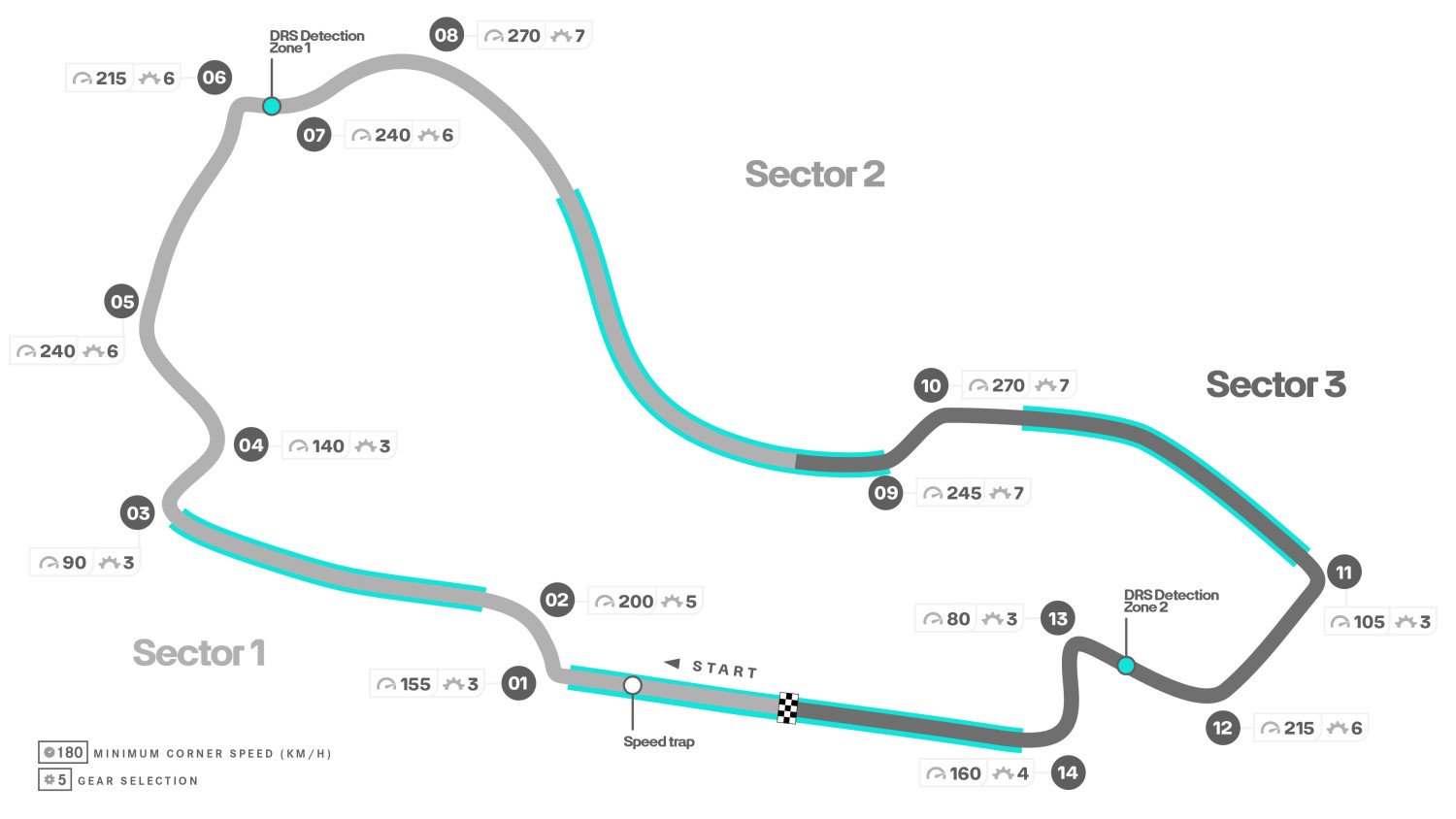
Located at the end of the first DRS zone, Turn Three is another tight right-hander that provides an opportunity for overtaking. However, it’s easy to lock the front-right tire under braking into the corner which can put you at risk of running wide into the gravel trap on the exit.
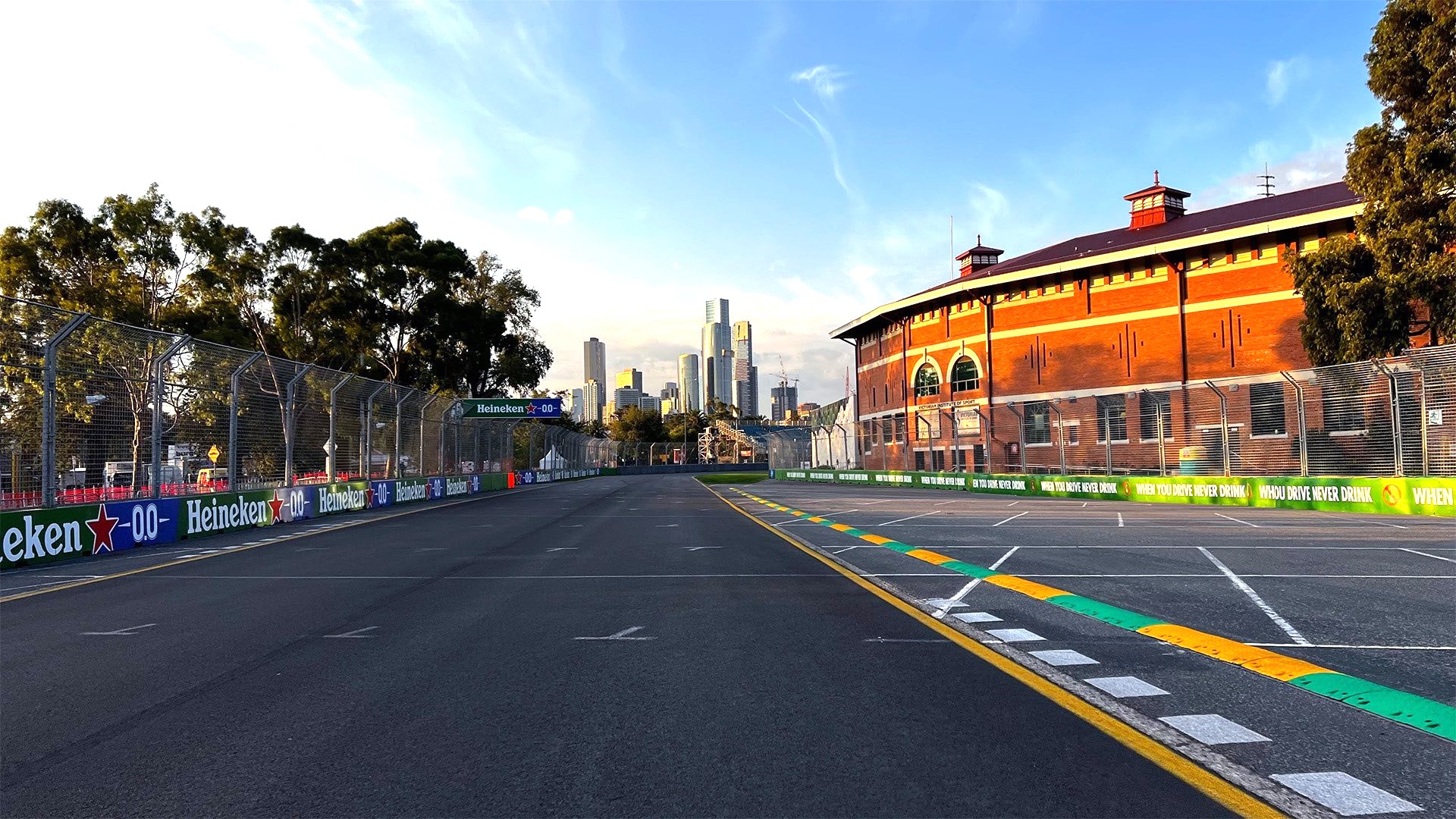
Turns Nine and 10 were spectacular corners before to the circuit alterations, but now they are more fearsome than ever.
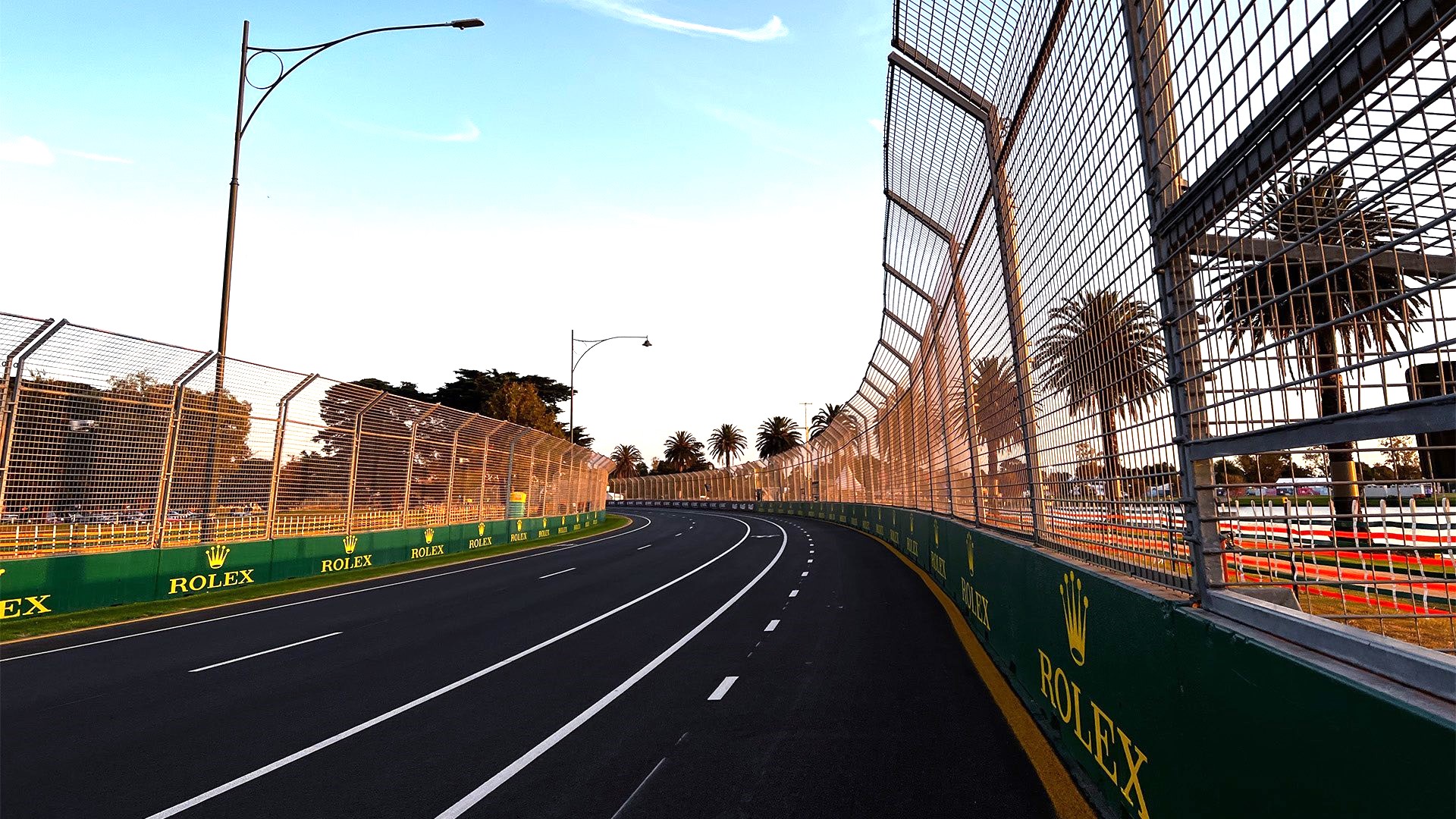
At the fastest point of the circuit, it’s a small dab of brake on the entry to Turn Nine, before a second deft touch of the brake before Turn 10 and the high-speed run to Turn 11.
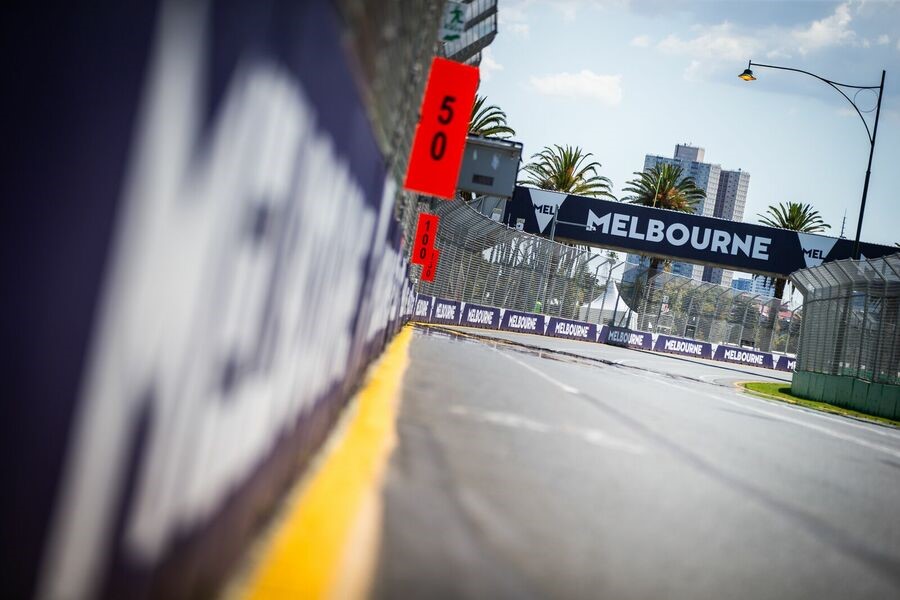
Fact File: Australian Grand Prix
- The Albert Park Circuit, modified prior to 2022 and thus shortened to 5.278 km, is a temporary track partially run on public roads. As part of the modifications two years ago, new tarmac was laid.
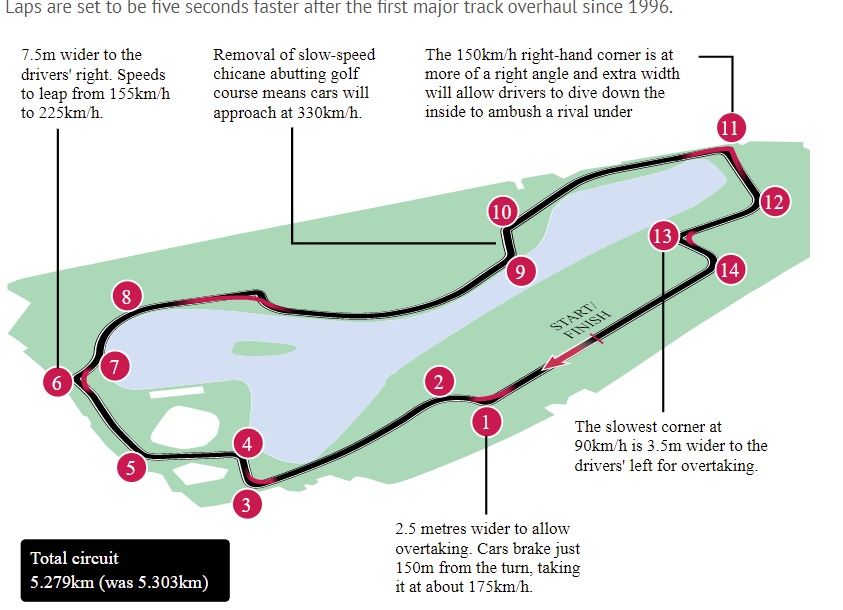
- In a change from last year, Pirelli will be bringing the softest tires in their range to Australia this year: the C3, C4, and C5.
- Last year, the tire selection was one step harder with the C2, C3, and C4 compounds being used.
- Melbourne has the second shortest pit lane on the calendar at just 281 meters. Cars therefore spend only about 13 seconds at pit lane speed – that is the least amount of time spent in the pit lane of any across the year.
- Formula 2 will join Albert Park’s support race schedule for the second consecutive season. We will therefore see junior driver Kimi Antonelli in action Down Under, racing for PREMA as he continues his debut season in the series.
- There is a considerable time difference (11 hours) between Melbourne and the team back at Brackley and Brixworth supporting remotely, adding another level of challenge to the weekend.
- Albert Park is one of two venues to host the Australian Grand Prix, along with Adelaide.
- The season-ending 1995 Australian Grand Prix and the season-opening 1996 Australian Grand Prix is the only time in F1 history that consecutive races have had the same title.
- Albert Park is a unique, rare combination of street circuit and permanent racetrack.
- The fast-flowing Turn 9, Turn 10 sequence is a crucial part of the lap for the driver, and is where plenty of time can be gained and lost.
- With 72% of the lap time, and 79% of lap distance, spent at full throttle, Albert Park ranks third highest of any circuit on the calendar judged on both these metrics.
Pirelli Tires
Pirelli’s C5 tire – the softest of the five slick compounds available this year – will make its debut at the Australian Grand Prix: round three of the 2024 season. This has been nominated alongside the C4 (as used in Jeddah) and the C3, which is seen at practically every race.
This is a softer selection compared to last year, when the C2, C3, and C4 were chosen, but it’s not the first time that the softest compound has been seen in Melbourne. Back in 2022, Pirelli brought the C5 to Albert Park as the soft nomination (when it was paired with C3 as medium and C2 as hard, leaving out the C4).
The decision to go with a softer selection was taken after analyzing last year’s race, which centered around the C2 with 10 drivers using it for 47 of the 58 laps, and three drivers running it for more than 50 laps. The 2023 Australian Grand Prix was characterized by numerous stoppages, including three safety cars and three red flags, with two restarts from the grid and one rolling restart.
The Albert Park track is made up of 14 corners, having recently been redesigned to make it more flowing. It’s still tricky to overtake on, although not as hard as it was in the past. Historically, a one-stop strategy has been the favored option, but the move to a softer tire nomination might change that – as well as creating situations where the pace difference between the cars as a result of varying levels of tire performance helps overtaking.
The C5 remains unaltered from 2023, but it’s the compound that has up to now been used least on the current generation of cars. It wasn’t nominated for either of the two opening races this year, and just 140 kilometers were covered on the softest compound in the 2024 range during the single pre-season test in Bahrain from 21-23 February. Lewis Hamilton was the only driver to complete a true long run with it, while the Williams drivers mainly used it for a series of in and out laps. Only two other teams, Ferrari and Stake F1, selected the C5 for the Bahrain test: an abrasive track that is not particularly suited to the softest compound. So it remains something of an unknown heading into this weekend’s Australian Grand Prix.
